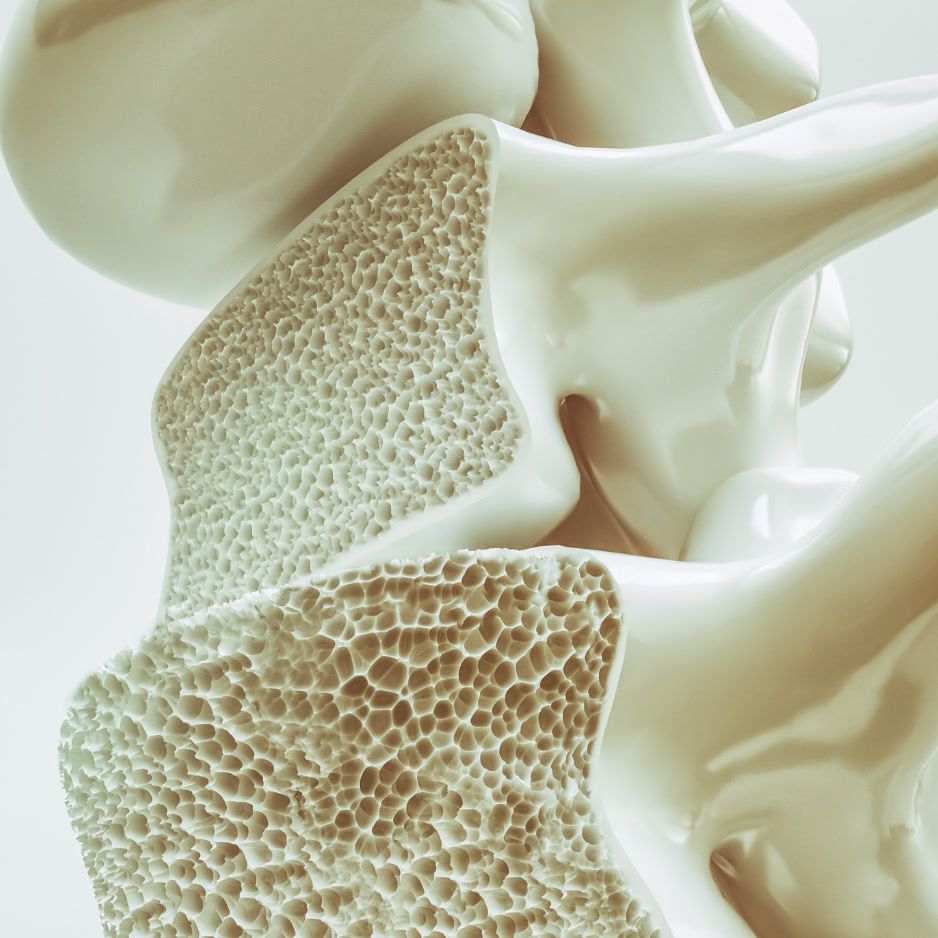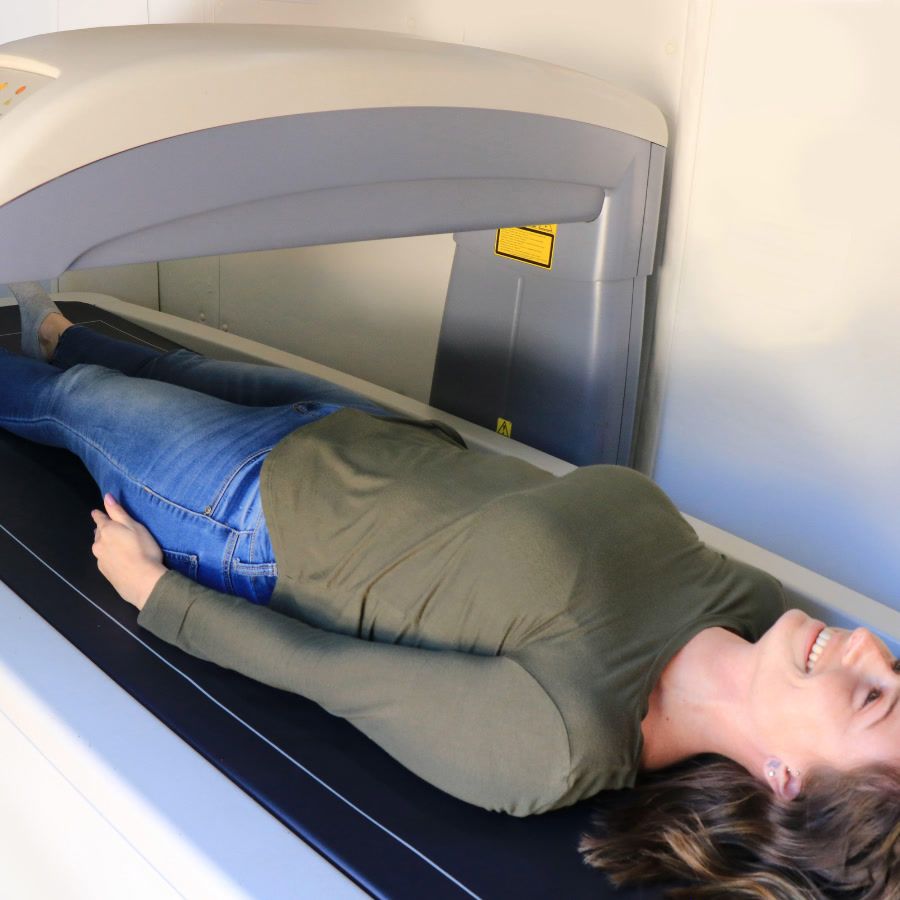15 Most Fattening Foods to Avoid (& Smart Swaps)
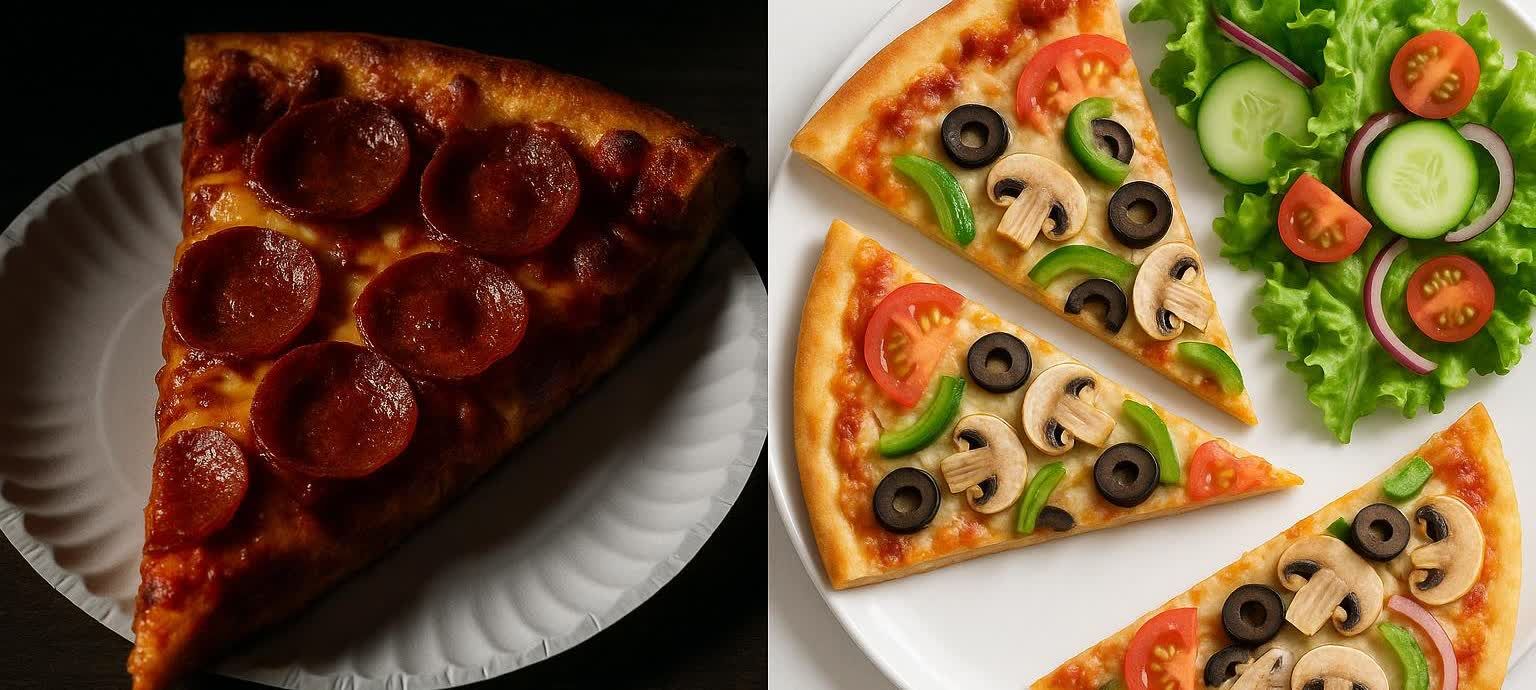
15 Most Fattening Foods to Avoid (& Smart Swaps)
Trimming excess body fat begins with identifying the foods most likely to push you into a calorie surplus. This article delivers a science-backed rundown of common high-calorie picks—plus realistic, tasty swaps to keep flavor on the menu.
15 Most Fattening Foods at a Glance
The table ranks foods by calories in a typical serving—using nutrient data from USDA FoodData Central—to highlight their potential impact on daily energy intake.
Beyond calories per serving, the ranking also factors in calorie density, hyper-palatability, and the ease of overconsumption—traits that can drive a calorie surplus even at modest portion sizes.
| Rank | Food | Typical Serving | Calories | Total Fat (g) | Saturated Fat (g) |
|---|---|---|---|---|---|
| 1 | Large milkshake | 22 oz | 800 | 25 | 16 |
| 2 | Trail mix w/ chocolate | 1 cup (160 g) | 693 | 40 | 10 |
| 3 | Deep-dish pepperoni pizza | 1 large slice | 640 | 28 | 12 |
| 4 | Mozzarella sticks | 6 pieces | 600 | 30 | 11 |
| 5 | Premium ice cream | 1 cup (132 g) | 540 | 34 | 22 |
| 6 | Fast-food cheeseburger | 1 sandwich | 520 | 27 | 13 |
| 7 | Large French fries | 1 order | 510 | 24 | 4 |
| 8 | Fried chicken thigh (breaded) | 1 piece | 450 | 30 | 8 |
| 9 | Restaurant cheesecake | 1 slice | 430 | 29 | 18 |
| 10 | Blended coffee drink | 16 oz | 420 | 18 | 12 |
| 11 | Medium glazed donut | 1 donut | 240 | 12 | 5 |
| 12 | Peanut butter | 2 Tbsp (32 g) | 190 | 16 | 3 |
| 13 | Bacon | 4 cooked strips | 184 | 14 | 5 |
| 14 | Potato chips | 1 oz (28 g) | 152 | 10 | 1 |
| 15 | Sugary cereal | 1 cup (≈37 g) | 140 | 1.5 | 0.3 |
What Makes a Food “Fattening”?
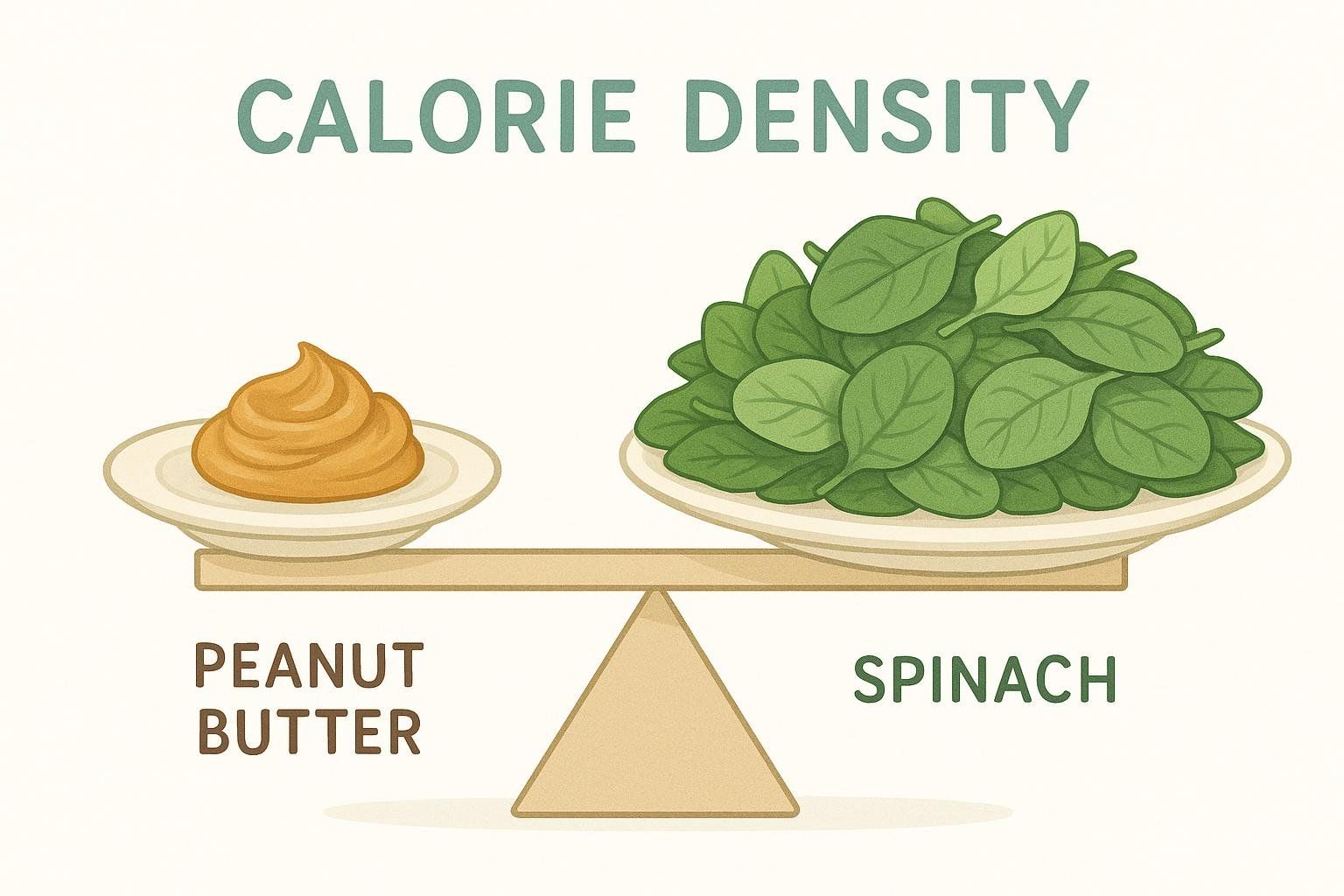
- High Calorie Density – Lots of calories in a small volume (e.g., oil-fried foods, nut butters). That makes it easy to eat a surplus without noticing.
- Added Fats & Sugars – The combination of fat and refined carbs spikes palatability and can dampen fullness signals, driving overeating.
- Low Satiety per Calorie – Studies on beverage consumption and satiety find that liquid calories (think milkshakes) or crunchy snacks (chips) rarely keep you full compared with their calorie cost.
- Portion Distortion – According to the CDC, restaurant servings have doubled in size since the 1980s.
The Top 15 Most Fattening Foods—Plus Healthier, Tasty Alternatives
1. Large Milkshake
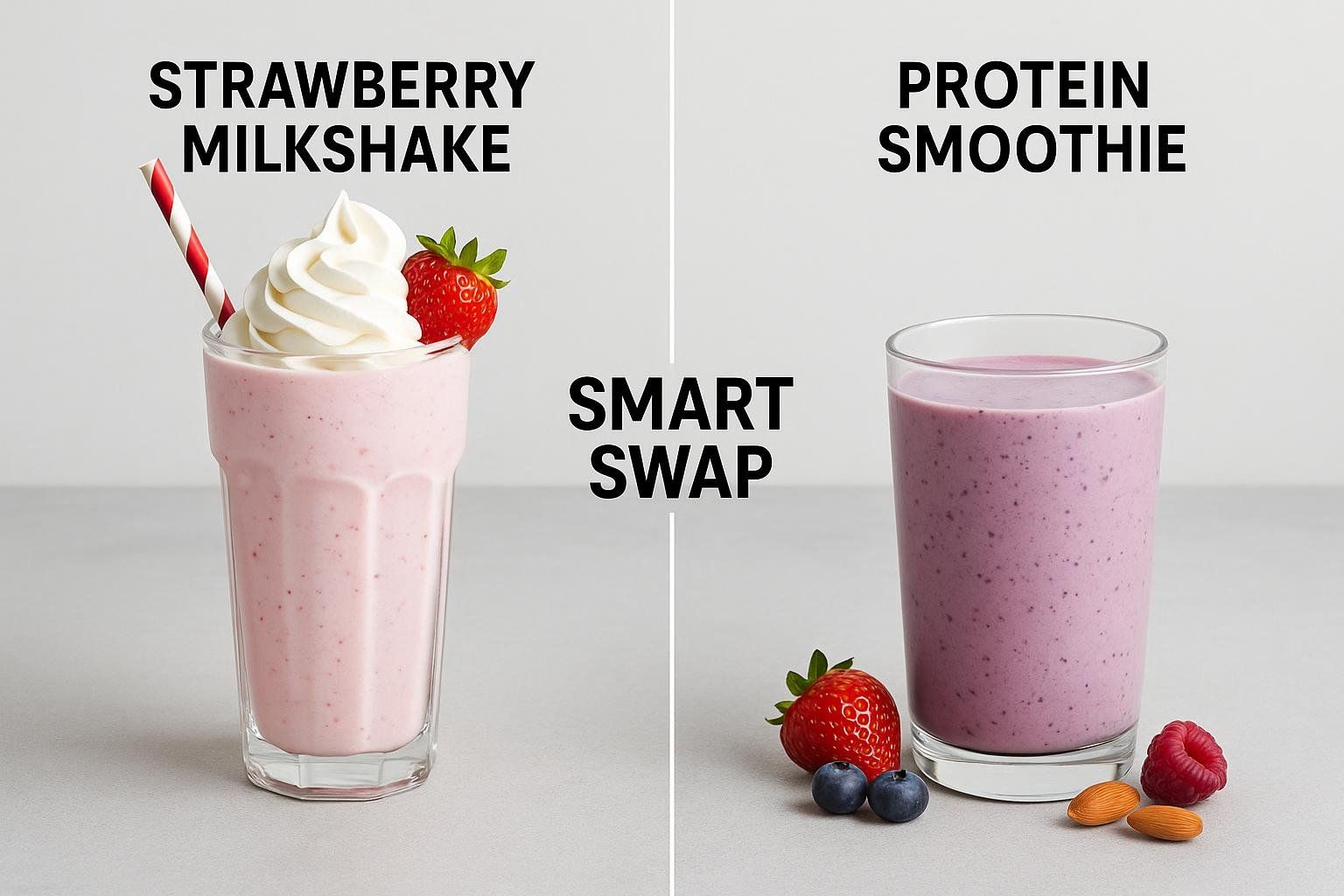
Liquid sugar and ice cream sidestep the body's fullness signals, a concept backed by research on beverage consumption and energy intake, so you can drink hundreds of calories without feeling full.
Smart Swap: A protein fruit smoothie with unsweetened almond milk (≈250 cal).
2. Trail Mix with Chocolate
Because it contains nuts, many people assume trail mix is “healthy” and pour generous handfuls. This health halo—a psychological effect where one positive attribute (like “contains nuts” or “organic”) makes the entire food seem healthier than it is—can be misleading.
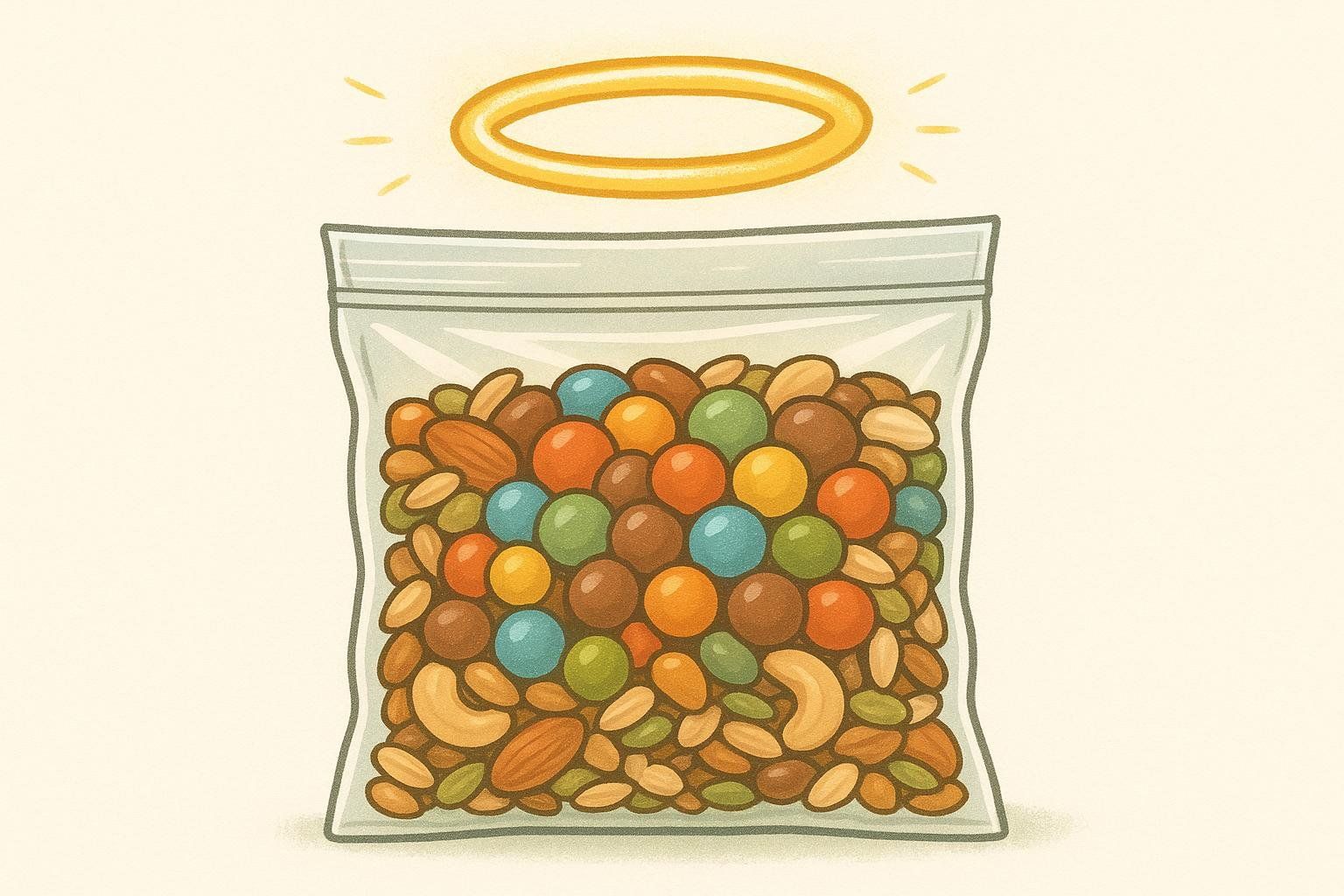
Coupled with extreme calorie density, a single one-cup serving packs nearly 700 calories before you feel remotely full.
Smart Swap: Make a homemade blend with raw almonds, pumpkin seeds, and unsweetened dried cranberries; leave out the candy.
3. Deep-Dish Pepperoni Pizza
Cheese, processed meat, and a buttery crust makes one slice exceptionally calorie-dense.
Smart Swap: Order thin-crust veggie pizza, blot excess oil, and pair two slices with a side salad.
4. Mozzarella Sticks
Each fried stick layers breading around full-fat cheese, absorbing additional oil during frying, which significantly increases its calorie and saturated-fat content.
Smart Swap: Bake part-skim mozzarella sticks at home (≈200 cal for four pieces).
5. Premium Ice Cream
This combination of high fat and sugar drives palatability and makes over-consumption likely.
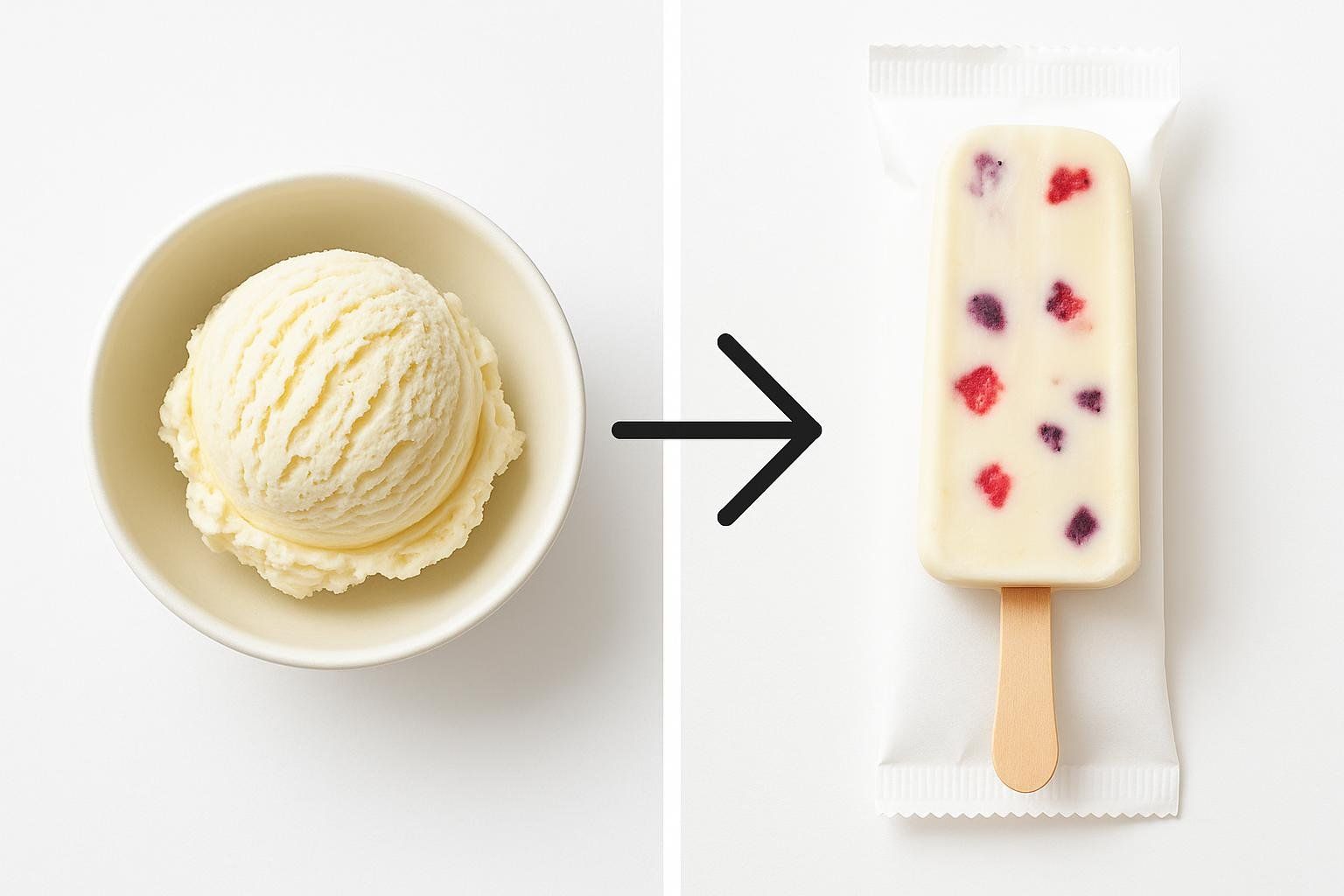
Smart Swap: Frozen Greek-yogurt bars (≈100 cal) or homemade banana “nice” cream.
6. Fast-Food Cheeseburger
A single burger contains nearly 25% of a typical 2,000-calorie day. Add fries and soda and you’ve eclipsed 1,200 calories in one sitting.
Smart Swap: Opt for a grilled chicken sandwich (≈380 cal) or a single-patty burger minus cheese and mayo.
7. Large French Fries
A 2018 study in Cell Metabolism found that the fat-and-starch combo lights up reward pathways, encouraging mindless munching.
Smart Swap: Split a small fry with a friend, or swap for apple slices.
8. Fried Chicken Thigh
Breading soaks up frying oil, significantly increasing its total fat content.
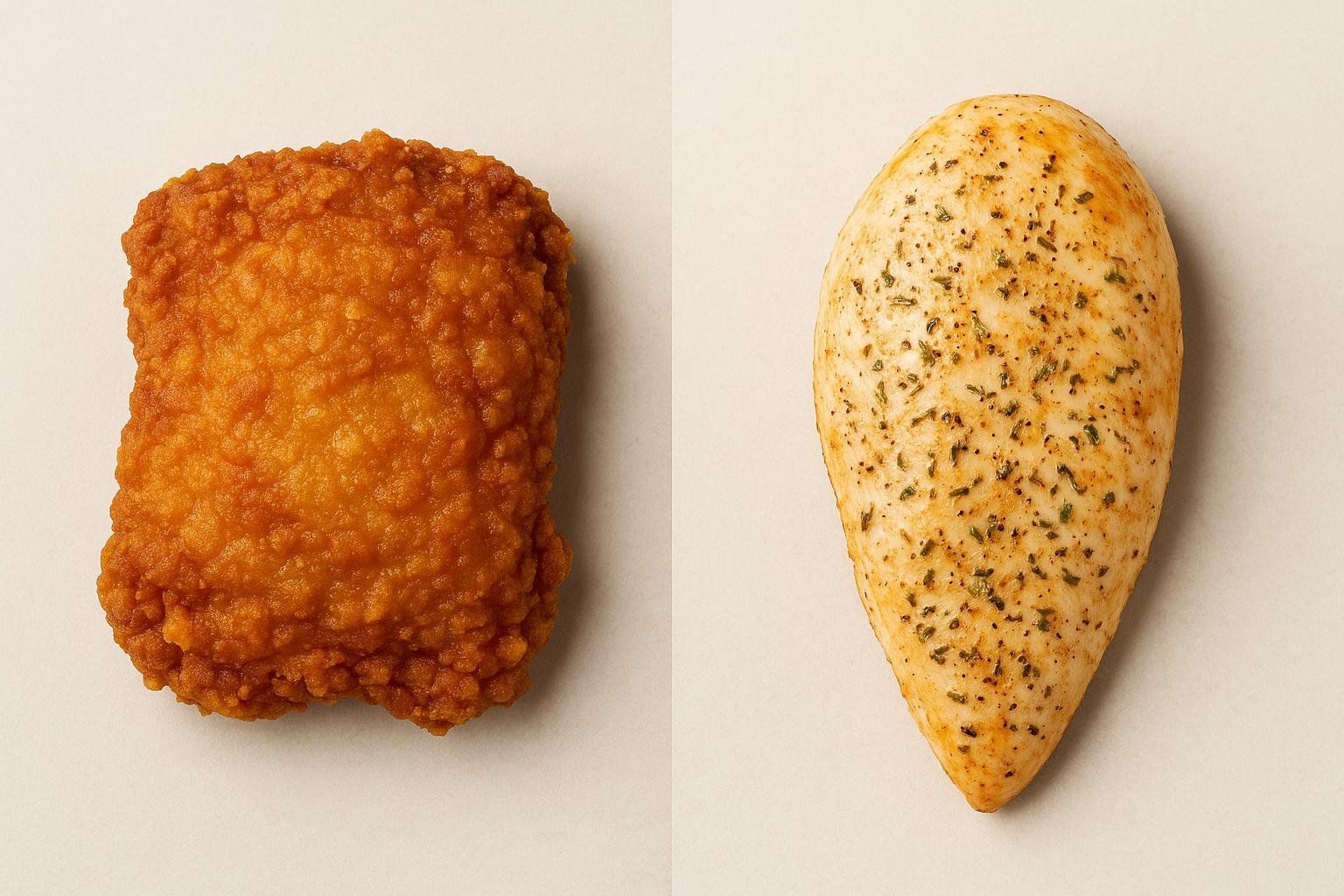
Smart Swap: Choose skinless baked or air-fried chicken; you’ll save ≈200 cal and 20 g of fat.
9. Restaurant Cheesecake
A base of cream cheese and sugar, often on a high-fat butter-and-graham-cracker crust, makes each bite exceptionally dense in both fat and refined carbohydrates.
Smart Swap: Order a half slice or share—or try a Greek-yogurt parfait with berries.
10. Blended Coffee Drink
Sugar, cream, and flavored syrups make this more dessert than pick-me-up.
Smart Swap: Unsweetened cold brew with a splash of almond milk (≈20 cal) and cinnamon.
11. Medium Glazed Donut
Low fiber and liquid glaze spike blood sugar, then crash—amping up cravings.
Smart Swap: Whole-grain English muffin with 1 tsp honey (≈140 cal) hits the sweet spot.
12. Peanut Butter
While peanut butter offers heart-healthy fats, its high calorie density and palatability make it easy to over-consume.
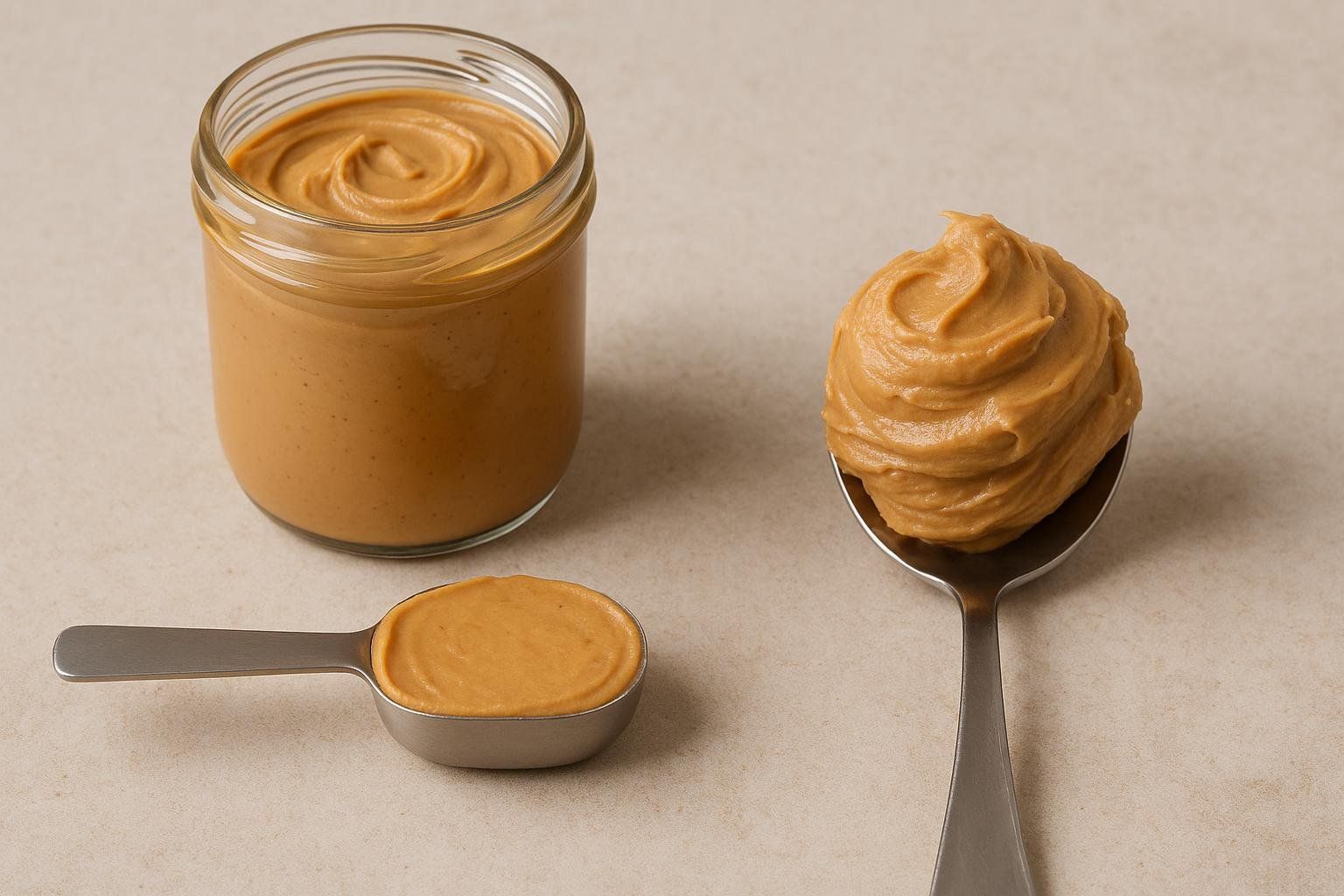
Smart Swap: Pre-portion servings in snack cups or choose powdered peanut butter (≈60 cal).
13. Bacon
Just a few strips pack in significant saturated fat, making it an easy way to drive up daily calorie and sodium totals.
Smart Swap: Use center-cut bacon or turkey bacon and stick to two strips. Better yet, flavor eggs with smoked paprika.
14. Potato Chips
Potato chips are hyper-palatable, which makes portion control challenging. In fact, research on portion size shows people eat significantly more when served from large bags.
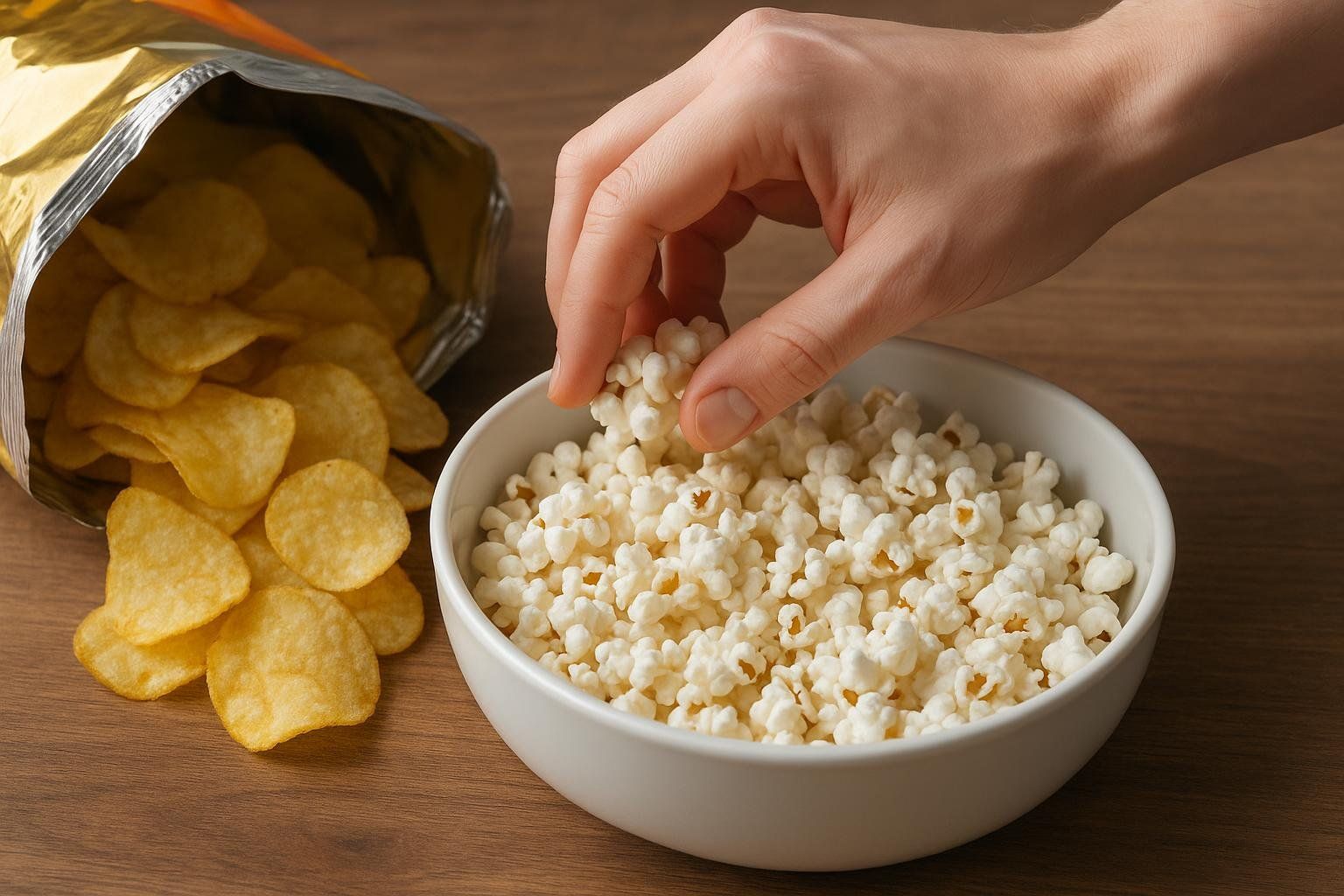
Smart Swap: Air-popped popcorn (31 cal per cup) or baked veggie chips.
15. Sugary Cereal
Quick-digesting sugars and refined grains offer little protein or fiber, so hunger rebounds fast and you’re likely to reach for extra snacks.
Smart Swap: High-protein cereal (≥10 g protein per serving) or overnight oats (see our overnight oats recipe).
Calorie Density vs. Nutrient Density
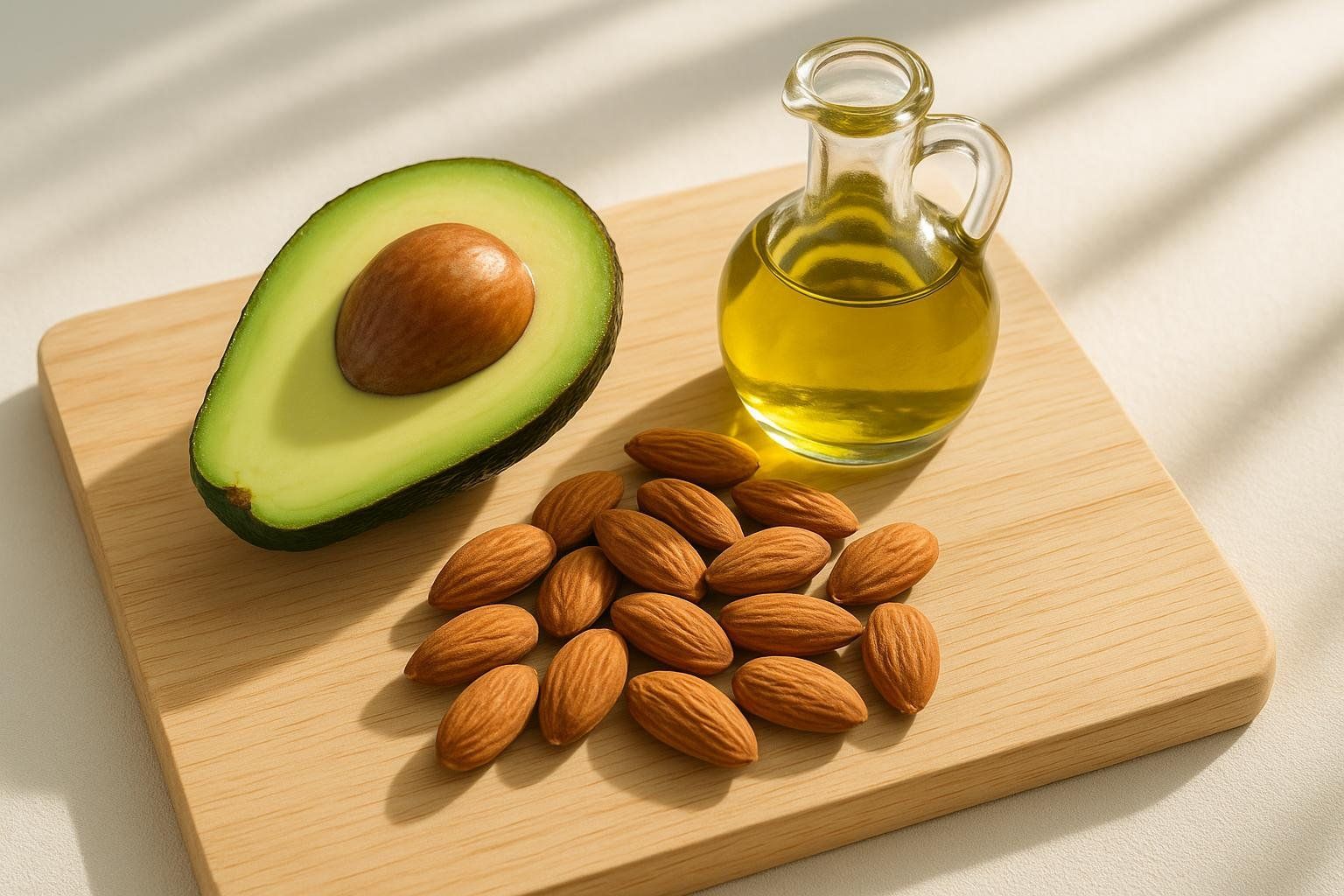
Not all high-calorie foods are villains. Extra-virgin olive oil, certain healthy snacks like nuts, and avocados provide heart-healthy fats and antioxidants. The key is mindful portions—think a tablespoon, not a pour.
Frequently Asked Questions
Which food has the most calories per gram?
Pure fats like oil and butter pack ~9 cal/g—more than double carbs or protein (4 cal/g).
Are nuts fattening or healthy?
Nuts are calorie-dense but rich in fiber, protein, and heart-healthy unsaturated fats. These nutrients boost satiety, improve cholesterol profiles, and provide essential micronutrients. As a result, a 1-oz (28 g) portion can actually support weight-management goals.
What are some good low-calorie snacks for curbing cravings?
Air-popped popcorn or a cup of edamame deliver volume and protein for under 150 calories.
How can I stop sugar cravings?
Hydrate, prioritize protein, and adopt the strategies in our 19 Tips to Stop Sugar Cravings.
Track Progress, Not Just Calories
Reducing these high-calorie foods is step one. Measuring how those changes impact your body composition is step two. A BodySpec DEXA scan provides precise data on fat mass, lean mass, and even visceral fat—far beyond what a scale shows.
Key Takeaways
- “Fattening” foods combine high calorie density, added fats & sugars, and oversized portions.
- Swap rather than ban: grilled vs. fried, thin crust vs. deep-dish, portion-controlled nuts vs. free-pour nut butter.
- Pair food adjustments with objective body-composition tracking for maximum accountability.
References
- Centers for Disease Control and Prevention. (2022). Portion Size Pitfalls. CDC.
- Cassady BA, Considine RV, Mattes RD. (2012). Beverage consumption, appetite, and energy intake. The American Journal of Clinical Nutrition.
- Perszyk EE, Shaw S, Jones JM, Small DM. (2018). Supra-Additive Effects of Combining Fat and Carbohydrate on Food Reward. Cell Metabolism.
- Rolls BJ. (2014). Portion size and obesity. Nutrition Today.

